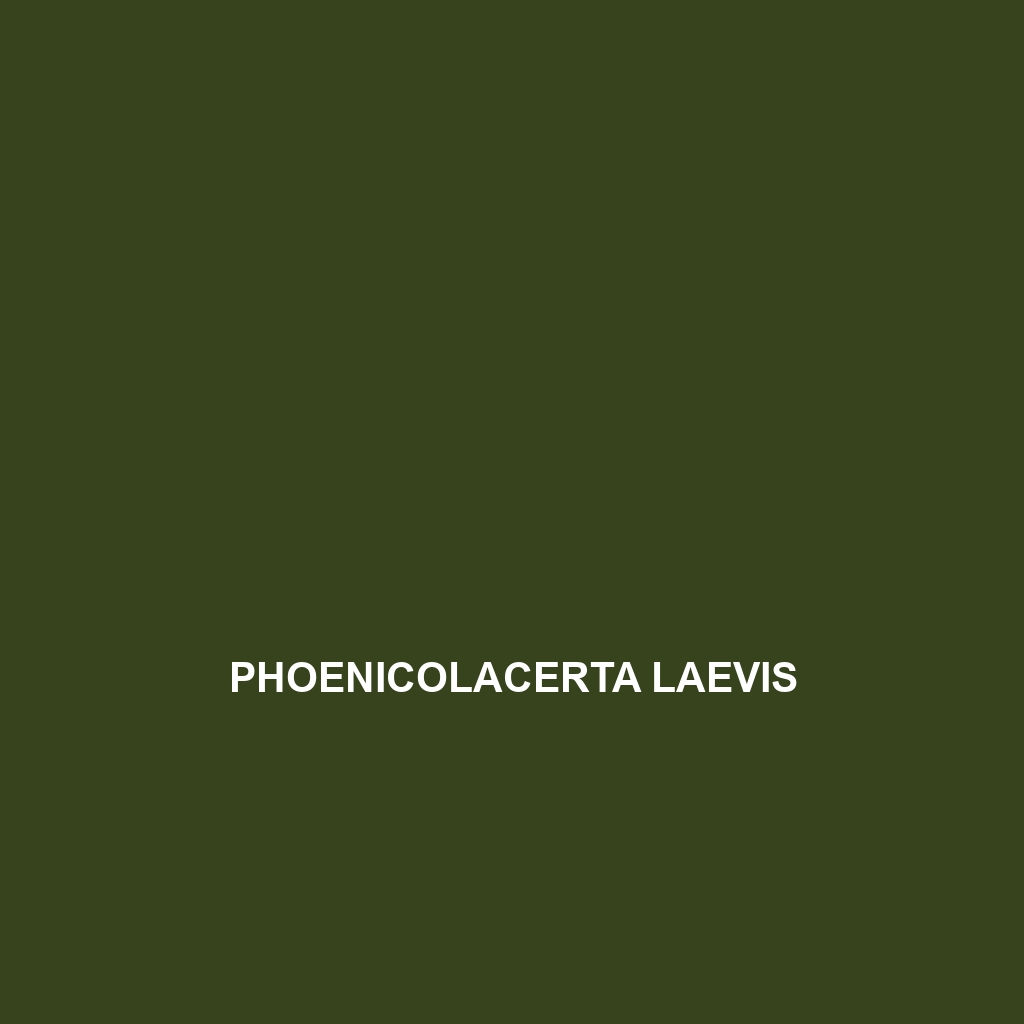Common Name
Phoenicolacerta laevis
Scientific Name
Phoenicolacerta laevis
Habitat
Phoenicolacerta laevis, commonly known as the Smooth Green Lizard, is primarily found in a variety of habitats across the eastern coast of the Mediterranean, particularly in regions such as southern Turkey, Cyprus, and parts of the Levant. The species thrives in warm and temperate environments, favoring areas like temperate forests, sandy coastal areas, and rocky hillsides. These habitats provide ample cover and access to sunlight, which are essential for thermoregulation. Furthermore, Phoenicolacerta laevis is sometimes found in savannas and regions that experience mild winters, where vegetation provides adequate shelter and food sources.
Physical Characteristics
Physically, Phoenicolacerta laevis exhibits several characteristics that make it easily identifiable. Adults typically measure between 15 to 20 cm in length, with slender bodies covered in smooth, vibrant green scales. The coloration may vary slightly depending on the individual’s habitat, with some displaying darker shades or intricate patterns for camouflage in leaf litter. The lizard has a long tail, which may be up to 1.5 times its body length and serves as a balance aid and defense mechanism. Its smooth skin and agile physique make it exceptionally well-adapted for life in both terrestrial and arboreal environments.
Behavior
The behavior of Phoenicolacerta laevis is fascinating, especially in terms of its diurnal lifestyle. These lizards are primarily active during the day, basking in sunlight to regulate their body temperature—a behavior known as thermoregulation. They are known for their agility and speed, often observed darting amongst rocks or vegetation to evade predators. Social interactions include territorial displays, especially during the breeding season when males may engage in visual and physical displays to attract females. Noteworthy are their unique mating rituals, which often involve elaborate courtship behaviors showcasing their vibrant colors.
Diet
Phoenicolacerta laevis is classified as an insectivore, primarily feeding on a diverse diet of insects such as beetles, grasshoppers, and ants. This diet provides the necessary nutrients for their growth and energy needs. They hunt using a combination of stalking and ambush tactics, often lying in wait for their prey to come close before striking with speed and precision. Occasionally, they may consume small fruits or plant material, indicating some level of omnivorous behavior, especially during seasons when insect populations fluctuate.
Reproduction
The reproductive cycle of Phoenicolacerta laevis typically begins in late spring when temperatures rise. Males actively seek out females, and after a brief courtship display, mating occurs. The female lays between 3 to 8 eggs in a carefully selected site, often in sandy soil or under cover to protect them from predators. The incubation period lasts approximately 8 to 10 weeks, after which hatchlings emerge fully formed and capable of independent survival. Parental care is minimal, as the young lizards must fend for themselves immediately after hatching.
Conservation Status
According to the International Union for Conservation of Nature (IUCN), Phoenicolacerta laevis is classified as least concern, indicating that it is not currently at high risk of extinction. However, habitat destruction due to urbanization and agricultural expansion poses significant threats. Conservation efforts are crucial in protecting their natural habitats and maintaining the ecological balance in the regions they inhabit.
Interesting Facts
Phoenicolacerta laevis exhibits some unique adaptations, including its remarkable ability to change color slightly depending on its environment, which aids in camouflage against predators. Additionally, these lizards have a preference for basking in sunny spots, which helps them digest food more efficiently. Their rapid reflexes and dexterous movements make them one of the more agile lizards found in their habitat.
Role in Ecosystem
Phoenicolacerta laevis plays a vital role in its ecosystem as both a predator and prey. By controlling insect populations, these lizards contribute to maintaining ecological balance. Furthermore, they serve as a food source for various predators, including birds of prey and snakes, integrating them into the food web. The presence of Smooth Green Lizards in their habitats signals a healthy ecosystem, making them important indicators of environmental health.
